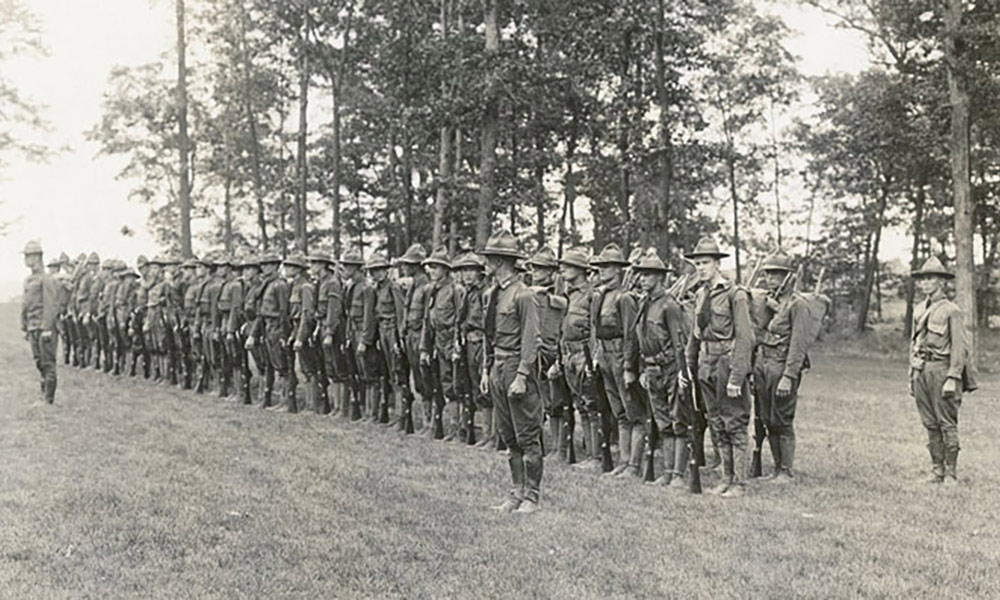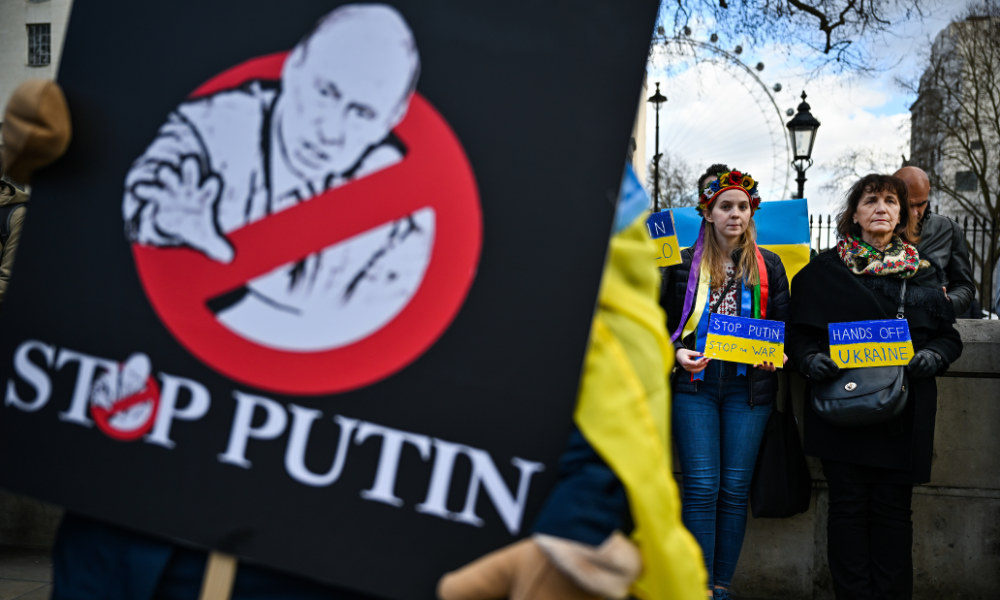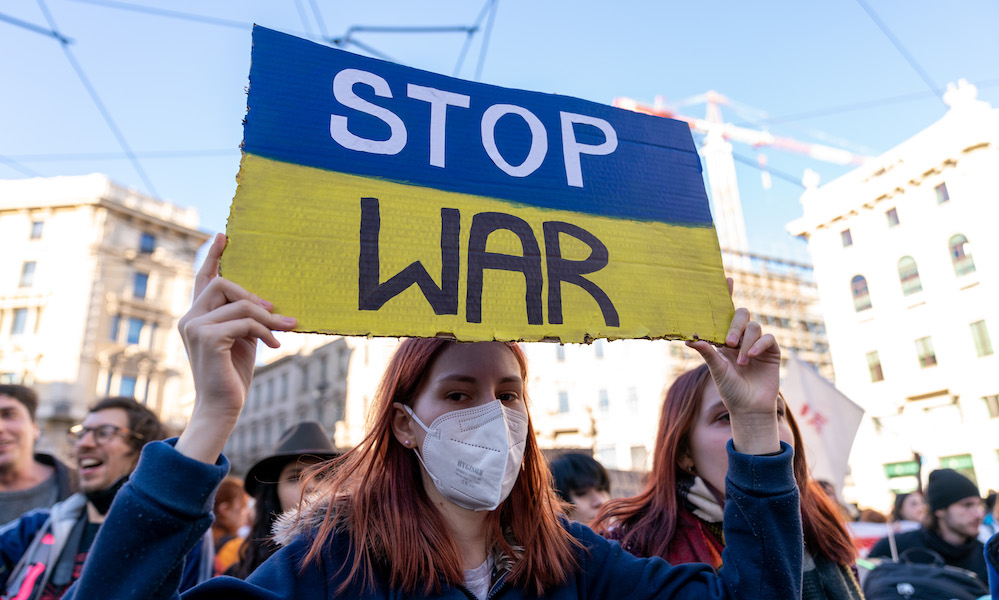What Did the Us Continually Try to Do in World War One That Made Them a Correct
Why did the US enter World War I?
 The Students Army Training Corps at the University of Rochester in 1917. November 11, 2018 marks the 100th anniversary of the end of the World War I. (University photo / Department of Rare Books, Special Collections, and Preservation)
The Students Army Training Corps at the University of Rochester in 1917. November 11, 2018 marks the 100th anniversary of the end of the World War I. (University photo / Department of Rare Books, Special Collections, and Preservation)

Hein Goemans.
The US entered World War I because Germany embarked on a deadly gamble.
Germany sank many American merchant ships around the British Isles which prompted the American entry into the war.
Rochester political scientist Hein Goemans answers the question why Germany was willing to risk American entry into the war.
Woodrow Wilson did not want war.
When World War I erupted in Europe in 1914, the 28th U.S. president pledged neutrality, in sync with prevailing American public opinion.
But while Wilson tried to avoid war for the next three years, favoring instead a negotiated collective approach to international stability, he was rapidly running out of options. Tensions heightened as Germany tried to isolate Britain in 1915 and announced unrestricted attacks against all ships that entered the war zone around the British Isles.
In early April 1917, with the toll in sunken U.S. merchant ships and civilian casualties rising, Wilson asked Congress for "a war to end all wars" that would "make the world safe for democracy." A hundred years ago, on April 6, 1917, Congress thus voted to declare war on Germany, joining the bloody battle—then optimistically called the "Great War."
"The U.S. declaration of war, in essence, was a recognition of the fact that Germany had chosen to impose a very risky gamble on the U.S.—risky for Germany, but the only way they thought they could obtain the victory they needed at home," says University of Rochester associate professor of political science Hein Goemans.
A specialist in international relations and conflict, Goemans is the author of War and Punishment: The Causes of War Termination and the First World War (Princeton University Press, 2000). Since then, he has also coauthored a book on leaders and war initiation, Leaders and International Conflict (Cambridge University Press, 2011).
IN THIS EPISODE OF THE QUADCAST: In an interview with associate professor of political science Hein Goemans, the expert on conflict points out that Germany was aware that its unrestricted submarine warfare would provoke America to enter WWI.

A special "War Issue" of the Campus Times from June 1918 shows the impact of the Great War on University life. (University images / Department of Rare Books, Special Collections, and Preservation)
"The Germans were well aware that the U.S. could not and would not accept unrestricted submarine warfare, but launched it anyway," says Goemans. "The U.S. declaration of war was thus already taken into account when the final decision for unrestricted submarine warfare was made in January 1917. Indeed, Hindenburg explicitly admitted the day before 'We count upon war with America.'"
So why would the German leadership under Paul von Hindenburg take such a big risk?
"It was a gamble, which was very likely to hurt them in the long run," explains Goemans. "They thought the gamble would open up a window of opportunity in which they could defeat the British. If they defeated the British, then they could prevent Americans from coming to the mainland and they would have a victorious end to the war."
Goemans argues that the Germans had seen how long it had taken the British soldiers from the time they arrived in France until the time they were ready for a major offensive at the Somme. The Germans calculated correctly that it would take the Americans at least as long to get their troops across the sea and ready to fight.
"The British thought: 'We fight the war by heroically stepping out of the trenches and locking arms and looking threateningly at the Germans and thereby defeat them,' " Goemans says. "The British were shot down in large numbers, the Americans made the same mistake. They refused to learn the technical and strategic lessons learned at great cost by the French and British."
Meanwhile, the German ruling class, led by an alliance of aristocratic landowners and industrialists, was fighting for its very own survival, threatened by seismic social and political upheaval.
"A victorious ending to the war was necessary for them because without victory, without spoils to divert those who had been loyal Germans—loyal to the old regime—they would face a revolution on the home front, and a revolution not unlike the one that the Russians had experienced," explains Goemans.
"You have to ask also, 'Why does this form of dispute resolution work? Why does killing hundreds of millions of people make an agreement possible where there was no agreement possible before?' "
While unrestricted submarine warfare is, of course, the textbook answer as to why the U.S. entered the war, there's also the infamous Zimmerman telegram.
Cabled by German foreign minister Arthur Zimmermann in January 1917 to the Mexican embassy, the secret diplomatic communication was intercepted and decoded by British intelligence. In the telegram, Zimmermann proposed a military alliance between Germany, Mexico, and Japan—should the United States enter the war. It basically said, "If you want to, we will help you in the effort of helping you regain some of your lost territories from the United States. The territory you lost in 1848 and subsequently," explains Goemans, who calls the telegram "a ludicrous proposal."
Mexico would be given Texas, Arizona, and New Mexico as spoils, according to the German plan. While Goemans says he never found any indication in official notes and papers from the time that the U.S. government took this threat seriously, it nevertheless became "a propaganda gift that could be used against the Germans more than it was a real factor in the decision making of the Americans [to go to war]." However, once its contents were splashed across newspaper front pages, American public opinion turned strongly against Germany, enflaming pro-war sentiments.
Three years earlier, long-smoldering rivalries in Europe over territory and borders had come to a head with the assassination of the Archduke Franz Ferdinand of Austria and his wife by a Serbian nationalist on June 28, 1914. The assassination, while ultimately a scapegoat, became the catalyst for the start of World War I, exactly one month later.
By the end of 1915, Austria-Hungary, Bulgaria, Germany, and the Ottoman Empire were battling against the Allied Powers of Britain, France, Russia, Italy, Belgium, Serbia, Montenegro, and Japan.
Germany formally surrendered on November 11, 1918. In those 19 months of U.S. engagement, more than two million American soldiers served on the battlefields of Western Europe—and 50,000 of them lost their lives.
WW1 dates
World War 1 was fought from July 28, 1914 to November 11, 1918
To Goemans, World War I illustrates a modern insight into the nature of war—that it basically takes two sides to fight. One side can always capitulate or accede to the other side's demands, trying to avoid war. It raises the question of why all players decide to fight.
"I study war not because it's cool, or because there are big explosions and big weapons, but because it's truly horrific," says Goemans. "But at the same time you have to ask also, 'Why does this form of dispute resolution work? Why does killing hundreds of millions of people make an agreement possible where there was no agreement possible before?' "
Alas, the peace that followed the "war to end all wars," lasted only two decades.
Learn how you can apply to study at the University of Rochester.
Read more
 Why does Russia want Ukraine?
Why does Russia want Ukraine?
Political scientist Hein Goemans, Rochester's expert on international conflicts, explains why Ukraine's fate might be tied to Putin's survival—and why this is the most dangerous geopolitical situation since World War II.
 How to end the war in Ukraine
How to end the war in Ukraine
Rochester political scientist Hein Goemans, an expert on war termination, applies possible scenarios to Russia's invasion of Ukraine.
Category: Society & Culture
Source: https://www.rochester.edu/newscenter/looking-back-100-years-u-s-enters-world-war-i-on-april-6-1917/
0 Response to "What Did the Us Continually Try to Do in World War One That Made Them a Correct"
Post a Comment